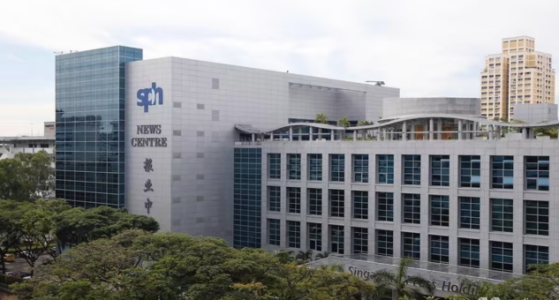As concerns rise over misleading figures, stakeholders demand transparency and accountability from SPH Media.
It appears that readers aren’t engaging with our national broadsheets as much as SPH Media claims.
On January 9, SPH Media acknowledged in a report by The Straits Times that it had inflated its daily circulation figures by 85,000 to 95,000, translating to a discrepancy of 10 to 12 percent.
This revelation raises serious questions for a company that oversees some of Singapore’s largest news titles across four languages.
The discrepancies were identified during an internal review launched in March 2022, coinciding with the appointment of former Accenture Singapore chairman Teo Lay Lim as CEO of SPH Media.
Adding to the controversy, it was an alternative news platform, Wake Up, Singapore (WUSG), that broke the story on January 8, prior to The Straits Times revealing the details.
According to WUSG, three senior SPH Media executives will depart the company as a consequence of this discrepancy, with hints pointing to “industry veterans” who collectively possess over 50 years of experience.
Read All About It (or Not)
Unfortunately, the Straits Times report did little to satisfy the public’s curiosity regarding this apparent act of fraud.
The scandal seems to have been downplayed as merely “issues with circulation data.” Even prominent figures like Lee Hsien Yang urged The Straits Times to “call a spade a spade.”
While the report provided some insight into how the inflated numbers were generated—such as including lapsed contracts, counting printed but destroyed copies, and double-counting subscriptions—it did not address the accountability of those involved.
Some figures were described as “arbitrarily derived” by a spokesperson, further complicating the narrative.
Perhaps most troubling is the revelation that funds were channeled into a project account to “purchase fictitious circulation.”
The spokesperson’s remark that “the staff involved had been taken to task or had left the organization” does little to clarify accountability.
Given the public interest in this matter, it is concerning that SPH Media has not disclosed the identities of those responsible.
The public, along with SPH Media’s readers, advertisers, employees, and Singapore Press Holdings’ shareholders, deserves to know who was behind these inflated figures.
Speculation has emerged regarding the involvement of chief customer officer Eugene Wee, although SPH Media’s spokesperson did not confirm his status, with sources suggesting he is no longer with the company.
What Does ‘Taken to Task’ Mean?
With the fallout from this scandal becoming increasingly apparent, questions arise regarding how SPH Media intends to address the damage.
The statement that the culprits will be “taken to task” and that “steps to strengthen processes” have been implemented lacks clarity.
What does this entail? Have any executives faced termination? Are they being held accountable in any tangible way?
How Long Has This Been Happening?
The internal review examined data from September 2020 to March 2022. Were circulation figures inflated prior to this period? Will past data be scrutinized?
The issue is already on the government’s radar, with the Ministry of Communications and Information (MCI) planning its own investigation. The findings will likely influence future funding for SPH Media.
Who Was Misled by the Fake Numbers?
SPH has long been a trusted institution. Stakeholders and investors have no reason to doubt their circulation figures.
However, if individuals were misled into investing based on inflated reach, they deserve transparency.
Was the government misled as well? Furthermore, will SPH make reparations to those affected?
Encouragingly for advertisers, media agencies confirm that they conduct their due diligence by examining third-party readership data alongside circulation numbers before committing ad spend.
Why Inflate the Numbers?
In response to the controversy, journalist and activist Kirsten Han remarked, “Imagine still having to fudge your figures even when you’re the only player in the local newspaper business.”
This raises valid questions about internal pressures to meet certain metrics amid challenging industry conditions.
In a 2019 Campaign Asia report, SPH’s media segment reported a 44.7 percent profit decline for the 2018/2019 fiscal year, compounded by a 12.2 percent drop in print circulation and a 14.9 percent fall in print ad revenue.
It seems unlikely that SPH Media executives would arbitrarily manipulate numbers. Were there pressures to meet targets in light of a struggling print sector? Is this incident indicative of deeper operational issues within the company?
Can the Public Still Trust SPH Media?
For decades, SPH Media’s publications have been regarded as the country’s newspapers of record, a status likely to persist given the lack of competition and the government’s commitment to their sustainability.
However, until the above questions are satisfactorily addressed, the public’s trust in the organization remains tenuous.
Amid this turmoil, it’s crucial to acknowledge the vital role journalists play in keeping the public informed and holding power accountable, a function unrelated to the inflated circulation numbers.
The Legacy of Legacy Media
Here’s a provocative suggestion in light of the scrutiny SPH is facing: what if SPH transitioned into a public service broadcaster akin to the BBC?
As a national broadcaster, the BBC operates under the UK’s Department of Digital, Culture, Media & Sport.
While SPH doesn’t need to be government-owned, it could occupy a unique position as a statutory corporation, allowing for some autonomy while fulfilling national service functions.
This would eliminate the risk of inflated circulation figures being misrepresented to the MCI, as total reach and engagement would fall under direct oversight.
Concerns about editorial independence would inevitably arise, but that’s just one of many unanswered questions lingering in the wake of this scandal.








